Qualcomm Snapdragon 8 Gen 2

Qualcomm Snapdragon 8 Gen 2: Power and Efficiency in the World of Mobile Technology
April 2025
Since its release in late 2022, the Snapdragon 8 Gen 2 has become a benchmark for performance in flagship smartphones. By 2025, this chip remains relevant, especially in premium devices, combining advanced technology with energy efficiency. Let’s explore why it continues to compete with the latest market offerings and who should pay attention to it.
1. Architecture and Process Technology: Innovations at the Nanoscale
Cores and Frequencies: Hybrid Power
The Snapdragon 8 Gen 2 is built on TSMC's 4nm process (N4P), ensuring a high transistor density and low power consumption. The CPU architecture features 8 cores in a three-tier structure:
- 1× Cortex-X3 (up to 3.2 GHz) — for resource-intensive tasks;
- 4× Cortex-A715 (up to 2.8 GHz) — a balance between performance and efficiency;
- 3× Cortex-A510 (up to 2.0 GHz) — for background processes.
This approach allows for dynamic load distribution, minimizing heat generation. The L2 cache has been increased to 1 MB, speeding up data access for frequently used applications.
GPU Adreno 740: Graphics at a New Level
The Adreno 740 graphics accelerator supports real-time ray tracing, which is critical for AAA games. It is compatible with Vulkan 1.3 and OpenGL ES 3.2 APIs, providing smooth rendering at resolutions up to 4K (144 Hz) or QHD+ (180 Hz). The Variable Rate Shading (VRS) technology optimizes GPU load, saving up to 30% power in games.
Energy Efficiency and TDP
The thermal design power (TDP) of 6.3 W is an exceptionally low figure for flagship chips. This is achieved through the 4nm process and Symphony Manager algorithms that manage data flows between the CPU, GPU, and neural processors.
2. Performance: From Gaming to AI Creativity
Gaming: Maximum Detail
In tests of Genshin Impact, the Snapdragon 8 Gen 2 delivers stable 60 FPS at ultra settings without throttling, thanks to vapor chamber cooling systems in smartphones (e.g., Xiaomi 13 Pro). In Call of Duty: Mobile, frame rates reach 120 FPS in QHD. Support for Unreal Engine 5 opens up possibilities for mobile projects with cinematic graphics.
Multimedia: 8K and HDR
The chip can encode/decode 8K@30fps video (H.265) and supports HDR10+ for recording and playback. In smartphones like the Samsung Galaxy S23 Ultra, this allows for dynamic range video recording that competes with professional cameras.
Artificial Intelligence: Accelerating Neural Networks
The Hexagon processor with AI core speeds up tasks by 4 times compared to Gen 1. Use cases include:
- Photography: Automatic skin and background retouching in real-time;
- Video: Stabilization and noise reduction in low light;
- Voice assistants: Speech recognition even in noisy environments.
Power Consumption: Longer Battery Life
Under moderate load (social media, streaming video), smartphones with Snapdragon 8 Gen 2 operate for 1.5–2 days. In power-saving mode (5% battery), the chip switches to A510 cores, extending device life by 2–3 hours.
3. Built-in Modules: The Future of Connectivity is Already Here
- Snapdragon X70 Modem: Supports 5G mmWave and Sub-6GHz with peak speeds up to 10 Gbps. Compatible with Standalone (SA) and Non-Standalone (NSA) networks.
- Wi-Fi 7 and Bluetooth 5.3: Wi-Fi speeds of up to 5.8 Gbps (320 MHz channels), and Bluetooth with LE Audio technology ensures lossless audio transmission.
- Navigation: Simultaneous operation with GPS, GLONASS, Galileo, BeiDou, and QZSS. Supports Snapdragon Satellite for emergency SMS in remote areas.
4. Comparison with Competitors: Who Are the Leaders?
- Apple A17 Bionic (iPhone 15 Pro): Best performance in single-threaded tasks (Geekbench 6 SC: ~2150), but limited multi-threading (GB6 MC: ~5100). Apple A17 graphics lags behind Adreno 740 in 3DMark Wild Life tests.
- MediaTek Dimensity 9300: Similar performance (AnTuTu ~1.5M) but higher TDP (7.1 W), leading to heat issues.
- Samsung Exynos 2300: Lacks energy efficiency due to the 5nm process.
The Snapdragon 8 Gen 2 maintains balance, outperforming competitors in multitasking and graphics.
5. Use Scenarios: Who Is This Chip Designed For?
- Gamers: Support for game controllers and Elite Gaming mode for FPS configuration.
- Creators: RAW+ recording, editing 8K video in mobile applications like Adobe Premiere Rush.
- Everyday Tasks: Instant app launches, smooth browsing with >20 tabs open.
6. Pros and Cons
Strengths:
- Best-in-class graphics;
- Low power consumption;
- Support for Wi-Fi 7 and satellite communication.
Weaknesses:
- High device prices (from $800);
- Heating during 8K recording (>10 minutes).
7. Smartphone Selection Tips
- Cooling: Look for models with a vapor chamber (e.g., ASUS ROG Phone 7).
- Battery: Ideally 5000 mAh with 80+ W fast charging.
- Display: AMOLED with LTPO 3.0 for adaptive refresh rates (1–144 Hz).
Popular Devices of 2025:
- Xiaomi 13 Pro ($899);
- OnePlus 11T ($849);
- Sony Xperia 1 V ($1299).
8. Final Verdict
The Snapdragon 8 Gen 2 is the ideal choice for those seeking flagship performance without compromises. This chip is suitable for:
- Gamers wanting to play on ultra settings;
- Photographers and videographers capturing with a smartphone;
- Users valuing long battery life.
Key benefits include readiness for future technologies (Wi-Fi 7, satellite connectivity) and stable performance even 2–3 years post-purchase. If your budget allows for $800–1300, the Snapdragon 8 Gen 2 remains one of the best options in 2025.
Basic
2x 2.8 GHz – Cortex-A715
2x 2.8 GHz – Cortex-A710
3x 2 GHz – Cortex-A510
GPU Specifications
Connectivity
Memory Specifications
Miscellaneous
Benchmarks
Phones with Snapdragon 8 Gen 2
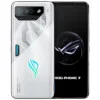

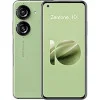


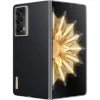

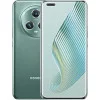


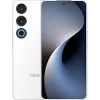



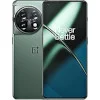

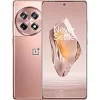
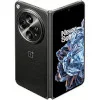

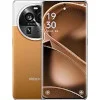
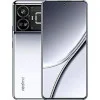
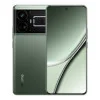



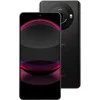
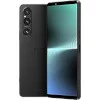
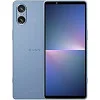






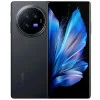
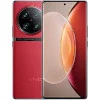


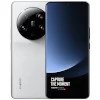


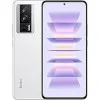





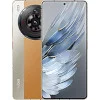

Tablets with Snapdragon 8 Gen 2

Comparison of Devices with Snapdragon 8 Gen 2
Compared to Other SoC
Share in social media
Or Link To Us
<a href="https://cputronic.com/en/soc/qualcomm-snapdragon-8-gen-2" target="_blank">Qualcomm Snapdragon 8 Gen 2</a>